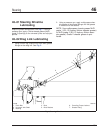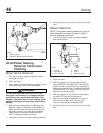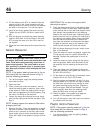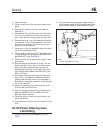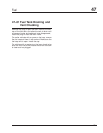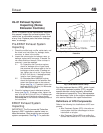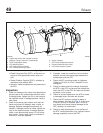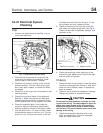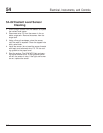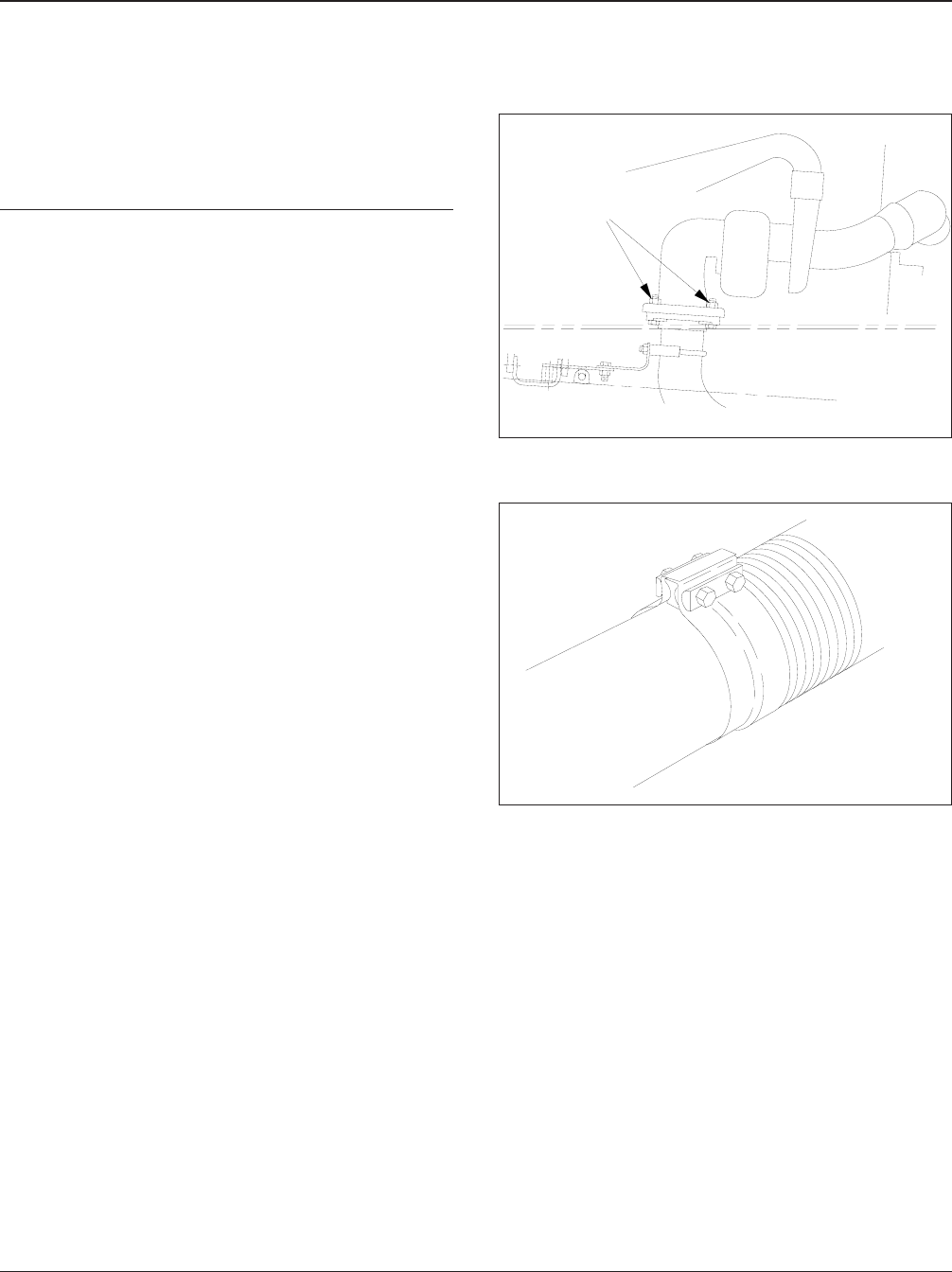
49–01 Exhaust System
Inspecting (Noise
Emission Controls)
NOTE: In addition to the maintenance interval in
this manual, inspect the exhaust system if the
vehicle has a noticeable increase in noise level
at any time. Replace parts that show leakage,
wear, or damage.
Pre-EPA07 Exhaust System
Inspecting
1. Check the muffler body, muffler outlet stack, muf-
fler shield, and inlet tubes, for leakage, dents,
corrosion, or holes in the muffler.
2. Inspect the exhaust pipe for leakage, wear, or
damage; replace with new parts, if needed. Do
not reuse wide-band clamps. Once a clamp is
removed, it must be replaced.
2.1 On Caterpillar and Cummins engines,
check for leakage at the V-type clamp
that attaches the exhaust pipe to the tur-
bocharger exhaust outlet. If leakage ex-
ists, tighten the nut on the V-type clamp
85 lbf·in (940 N·cm). If leakage persists,
install a new V-band coupling.
2.2 On Mercedes-Benz MBE900 engines,
check the tightness of the fasteners that
attach the exhaust pipe to the exhaust
flange (see Fig. 1). If needed, tighten the
fasteners 33 lbf·ft (45 N·m) for Mercedes-
Benz MBE900 engines.
3. Check for leakage at each wide-band exhaust
clamp (see Fig. 2). If leakage exists, tighten the
nuts 40 to 60 lbf·ft (54 to 81 N·m). If leakage per-
sists, install a new wide-band exhaust clamp.
See Group 49 of the
Acterra
®
Workshop Manual
for instructions.
EPA07 Exhaust System
Inspecting
IMPORTANT: The Environmental Protection
Agency’s 2007 regulations require lower ex-
haust emissions, thus requiring new exhaust
system components. See Fig. 3. In particular
the after-treatment device (ATD), which is part
of the after-treatment system (ATS), requires
special attention during regularly scheduled
maintenance inspections. If any discrepancies
are discovered, refer to the engine manufactur-
er’s service literature for repair instructions.
Definitions of ATS Components
Refer to the following list of definitions of ATS com-
ponents.
• After-Treatment System (ATS)—the entire ex-
haust system from the turbocharger to the ex-
haust stack or tail pipe.
• After-Treatment Device (ATD)—a muffler-like
canister that houses a DPF, DOC, and sensors.
f490032a
10/05/94
A
A. Check the Tightness of These Fasteners
Fig. 1, Typical Exhaust-Pipe to Exhaust-Flange
Fasteners
f490005a
10/05/94
Fig. 2, Wide-Band Exhaust Clamp
Exhaust 49
Acterra Maintenance Manual, January 2007 49/1



